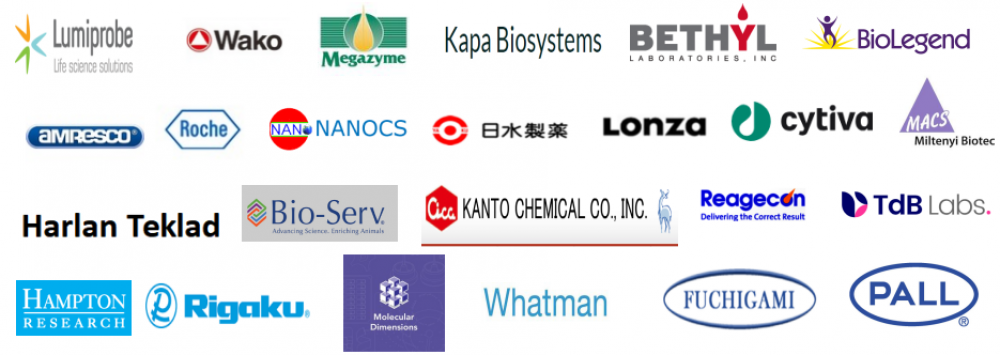TDB–FITC (Fluorescein isothiocyanate)
Molecular Formula: C21H11NO5S
CAS Number isomer I: 3326-32-7
CAS Number isomer II: 18861-78-4
FITC (fluorescein isothiocyanate) is a derivative of fluorescein. It is the most widely used fluorescent probe for the preparation of conjugates of molecules from molecular biology or carbohydrate polymers such as dextran1.
FITC(异硫氰酸荧光素)是荧光素的衍生物。 它是最广泛使用的荧光探针,用于从分子生物学或碳水化合物聚合物(如葡聚糖1)制备分子偶联物。
Structure and physical properties
FITC exhibits an excitation maximum at λ = 495 nm and emission maximum at approximately λ = 519 nm. The color of the compound is yellow while the emitted light is green. There are two different isomers of FITC:
结构和物理特性
FITC 在 λ = 495 nm 处表现出最大激发,在大约 λ = 519 nm 处表现出最大发射。 该化合物的颜色为黄色,而发出的光为绿色。 FITC 有两种不同的异构体:
- Isomer I, also referred to as fluorescein 5-isothiocyanate or 5-FITC
- Isomer II, also referred to as fluorescein 6-isothiocyanate or 6-FITC
The variation of the excitation and emission wavelengths among the two isomers of FITC is minor. FITC-functionalized biopolymers such as FITC-dextrans exhibit similar excitation and emission 0.
FITC 的两种异构体之间激发和发射波长的变化很小。 FITC 功能化的生物聚合物,如 FITC-葡聚糖,表现出类似的激发和发射 0。

Depending on the isomer, FITC contains an isothiocyanate group at either position 5 (isomer I) or position 6 (isomer 2) of the bottom benzene ring, see figure 2. Isothiocyanate easily reacts with nucleophiles such as amines under mild conditions. The compound is often used in the form of one of its two isomers or sometimes as mixture of the two.
根据异构体的不同,FITC 在底部苯环的第 5 位(异构体 I)或第 6 位(异构体 2)包含一个异硫氰酸酯基团,见图 2。异硫氰酸酯在温和条件下很容易与胺等亲核试剂反应。 该化合物通常以其两种异构体之一的形式或有时以两种异构体的形式使用。

Storage and stability
Store at 0-8 ˚C in a tightly closed container when not in use. FITC is stable under recommended storage conditions.
储存和稳定性
不使用时,将其储存在 0-8 ˚C 的密闭容器中。 FITC 在推荐的储存条件下是稳定的。
Solubility
FITC is soluble in DMSO and DMF.
溶解度
FITC 可溶于 DMSO 和 DMF。
Applications
General FITC is commonly used for labeling antibodies2 (IgG) and also in other immunological applications. It is also often used in flow cytometry, a technology frequently used by biologists to study cellular populations with high precision3.
应用
一般的FITC 通常用于标记抗体 2 (IgG) 以及其他免疫学应用。 它也常用于流式细胞术,生物学家经常使用这种技术来高精度研究细胞群3。
FITC-dextran FITC-葡聚糖
The labelling of dextran with fluorescein via its FITC derivative was first described in a publication in 1973 by de Belder and Granath4. Now it is a long-established method for obtaining fluorescent labelled polysaccharides. FITC-functionalized polysaccharides such as FITC-dextrans are very useful for studying permeability and transport in a large variety of cells and tissues. This includes the intestinal5, neoplastic6– and ocular7 tissue as well as in research related to brain and neural system8. FITC-dextran and other FITC-conjugated polysaccharides can also be used to study the microcirculation, which can be described as the smallest circulation of blood in the microvessels. These are present within all organ tissues. FITC-dextrans have been used in studies of leukocyte adhesion, macromolecular leakage (see figure 3) and the leakage of microcirculation during ischemia/reperfusion 9. FITC-dextrans have also been used to study the intestinal mucosal microcirculation10.
de Belder 和 Granath 于 1973 年在出版物中首次描述了用荧光素通过其 FITC 衍生物标记葡聚糖。现在它是一种长期建立的获得荧光标记多糖的方法。 FITC 功能化多糖,如 FITC-葡聚糖,对于研究多种细胞和组织的渗透性和转运非常有用。这包括肠道 5、肿瘤 6 和眼 7 组织以及与大脑和神经系统相关的研究 8。 FITC-葡聚糖等FITC-共轭多糖也可用于研究微循环,可谓微血管中血液的最小循环。它们存在于所有器官组织中。 FITC-葡聚糖已用于研究白细胞粘附、大分子渗漏(见图 3)和缺血/再灌注过程中微循环的渗漏 9。FITC-葡聚糖也已用于研究肠粘膜微循环 10。

pH Indicator pH指示剂
FITC and other fluorescent dyes have the ability of changing color in response to pH-changes. This can be utilized for measuring pH in living cells. Changes in cellular pH can reflect a range of physiological processes, including muscle contraction, endocytosis, cell proliferation, apoptosis, and ion transport11.
Fluorescent pH-indicators can be either stand-alone-dyes, such as FITC, or dyes coupled to a macromolecule, such as FITC-dextran. The advantage of using fluorescent dextran derivatives is that the molecules can be accumulated in specific intracellular compartments12. Compared to microelectrode techniques, fluorescent pH-indicators also have greater spatial sampling capability11. Another advantage of the probes and indicators is that they don’t bind to cellular proteins12.
FITC 和其他荧光染料具有响应 pH 值变化而改变颜色的能力。 这可用于测量活细胞中的 pH 值。 细胞 pH 值的变化可以反映一系列生理过程,包括肌肉收缩、内吞作用、细胞增殖、细胞凋亡和离子转运11。
荧光 pH 指示剂可以是独立染料,例如 FITC,也可以是与大分子偶联的染料,例如 FITC-葡聚糖。 使用荧光葡聚糖衍生物的优点是分子可以在特定的细胞内隔室中积累。 与微电极技术相比,荧光 pH 指标还具有更大的空间采样能力 11。 探针和指示剂的另一个优点是它们不与细胞蛋白质结合。
| Catalog no | Name | MW (Da) | Packsize |
| FITC | FITC (isomer I) | n/a | 100mg |
| FITC | FITC (isomer I) | n/a | 250mg |
| FITC | FITC (isomer I) | n/a | 1g |
FITC-products from TdB Labs
- FITC (isomer I)
- FITC -dextran
- FITC -lysine-dextran
- FITC-CM -dextran
- FITC-CM -polysucrose
- FITC-DEAE -dextran
- FITC-DEAE -polysucrose
- FITC -dextran sulfate
- FITC -hydroxyethyl starch
- FITC -inulin
- FITC -polysucrose
- FITC -Q-dextran
- FITC -trehalose
- Fluorescein Hyaluronic Acid
References
All publications
- Fluorescein Isothiocyanate – an overview | ScienceDirect Topics. https://www.sciencedirect.com/topics/neuroscience/fluorescein-isothiocyanate.
- The, T. H. & Feltkamp, T. E. W. Conjugation of fluorescein isothiocyanate to antibodies. Immunology 18, 865–873 (1970).
- Picot, J., Guerin, C. L., Le Van Kim, C. & Boulanger, C. M. Flow cytometry: retrospective, fundamentals and recent instrumentation. Cytotechnology 64, 109–130 (2012).
- de Belder, A. N. & Granath, K. Preparation and properties of fluorescein-labelled dextrans. Carbohydrate Research 30, 375–378 (1973).
- Aden, K. et al. Epithelial RNase H2 Maintains Genome Integrity and Prevents Intestinal Tumorigenesis in Mice. Gastroenterology 156, 145-159.e19 (2019).
- Gerlowski, L. E. & Jain, R. K. Microvascular permeability of normal and neoplastic tissues. Microvasc. Res. 31, 288–305 (1986).
- Elevated cAMP opposes (TNF-alpha)-induced loss in the barrier integrity of corneal endothelium. – Abstract – Europe PMC. https://europepmc.org/article/pmc/pmc2932488.
- Hultström, D., Malmgren, L., Gilstring, D. & Olsson, Y. FITC-Dextrans as tracers for macromolecular movements in the nervous system. A freeze-drying method for dextrans of various molecular sizes injected into normal animals. Acta Neuropathol. 59, 53–62 (1983).
- Svensjö, E. et al. Maxadilan, the Lutzomyia longipalpis vasodilator, drives plasma leakage via PAC1–CXCR1/2-pathway. Microvascular Research 83, 185–193 (2012).
- Schmidt, C. et al. Confocal laser endomicroscopy reliably detects sepsis-related and treatment-associated changes in intestinal mucosal microcirculation. Br J Anaesth 111, 996–1003 (2013).
- Han, J. & Burgess, K. Fluorescent indicators for intracellular pH. Chem. Rev. 110, 2709–2728 (2010).
- Takahashi, S. et al. Development of a Series of Practical Fluorescent Chemical Tools To Measure pH Values in Living Samples. J. Am. Chem. Soc. 140, 5925–5933 (2018).
